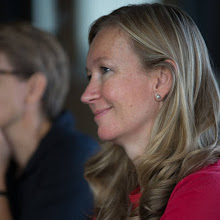More on blogging like a man
My earlier post about the Gender Genie made me remember that I have an article by Herring and Paolillo (2006) sitting on my desk precisely about this very piece of software. Herring and Paolillo examine and extend the empirical work of Argomon and Koppel (2003), which posits a connection between the gender of the author and certain linguistic features in writing style: namely, the use of pronouns and determiners, which they map onto interactional and informational styles.
Herring and Paolillo's piece is interesting for the critique they offer of Agromon's work. Crucially Herring and Paolillo find that the linguistic features that Argomon and Koppel identify don't function as gender variables, but rather as genre variables, at least for personal and filter blogs. The implications of this are many. (1) We need to be careful about the relationship between gender and genre. How are these relationships formed? What criteria are they based on? What does this mean for language and gender studies? (2) Is it that writing on blogs really is more universalised than other forms of CMC, or is this only in respect of the linguistic features they have examined (pronouns, determiners)? What would happen if you looked at other features too?
I'm taking this further in my own work, examining a range of 'narrative-like' features in the cancer blogs in my data sample:
(1) linking (are these informational or personal)
(2) post length
(3) Evaluation (cf Labov) (so intensifiers, comparators, correlatives, external expressions of evaluation)
(4) construction of a world view, as indicated through transitivity (Halliday 1994) choices.
I also want to do a corpus based analysis of the blog entries, where I build on the work of Andrew Salway and David Herman with the corpus narratology initiative. What I like about their work is that it builds the theory from the textual analysis up, rather than pre-supposing which categories will be significant to start with.
Hmm, I seem to have my work cut out for me here. But what I am looking forward to most is finding the points of juxtaposition and connection within this analysis. And I have learned a fair bit about treatments for different kinds of cancer too.
Herring and Paolillo's piece is interesting for the critique they offer of Agromon's work. Crucially Herring and Paolillo find that the linguistic features that Argomon and Koppel identify don't function as gender variables, but rather as genre variables, at least for personal and filter blogs. The implications of this are many. (1) We need to be careful about the relationship between gender and genre. How are these relationships formed? What criteria are they based on? What does this mean for language and gender studies? (2) Is it that writing on blogs really is more universalised than other forms of CMC, or is this only in respect of the linguistic features they have examined (pronouns, determiners)? What would happen if you looked at other features too?
I'm taking this further in my own work, examining a range of 'narrative-like' features in the cancer blogs in my data sample:
(1) linking (are these informational or personal)
(2) post length
(3) Evaluation (cf Labov) (so intensifiers, comparators, correlatives, external expressions of evaluation)
(4) construction of a world view, as indicated through transitivity (Halliday 1994) choices.
I also want to do a corpus based analysis of the blog entries, where I build on the work of Andrew Salway and David Herman with the corpus narratology initiative. What I like about their work is that it builds the theory from the textual analysis up, rather than pre-supposing which categories will be significant to start with.
Hmm, I seem to have my work cut out for me here. But what I am looking forward to most is finding the points of juxtaposition and connection within this analysis. And I have learned a fair bit about treatments for different kinds of cancer too.


0 Comments:
Post a Comment
<< Home